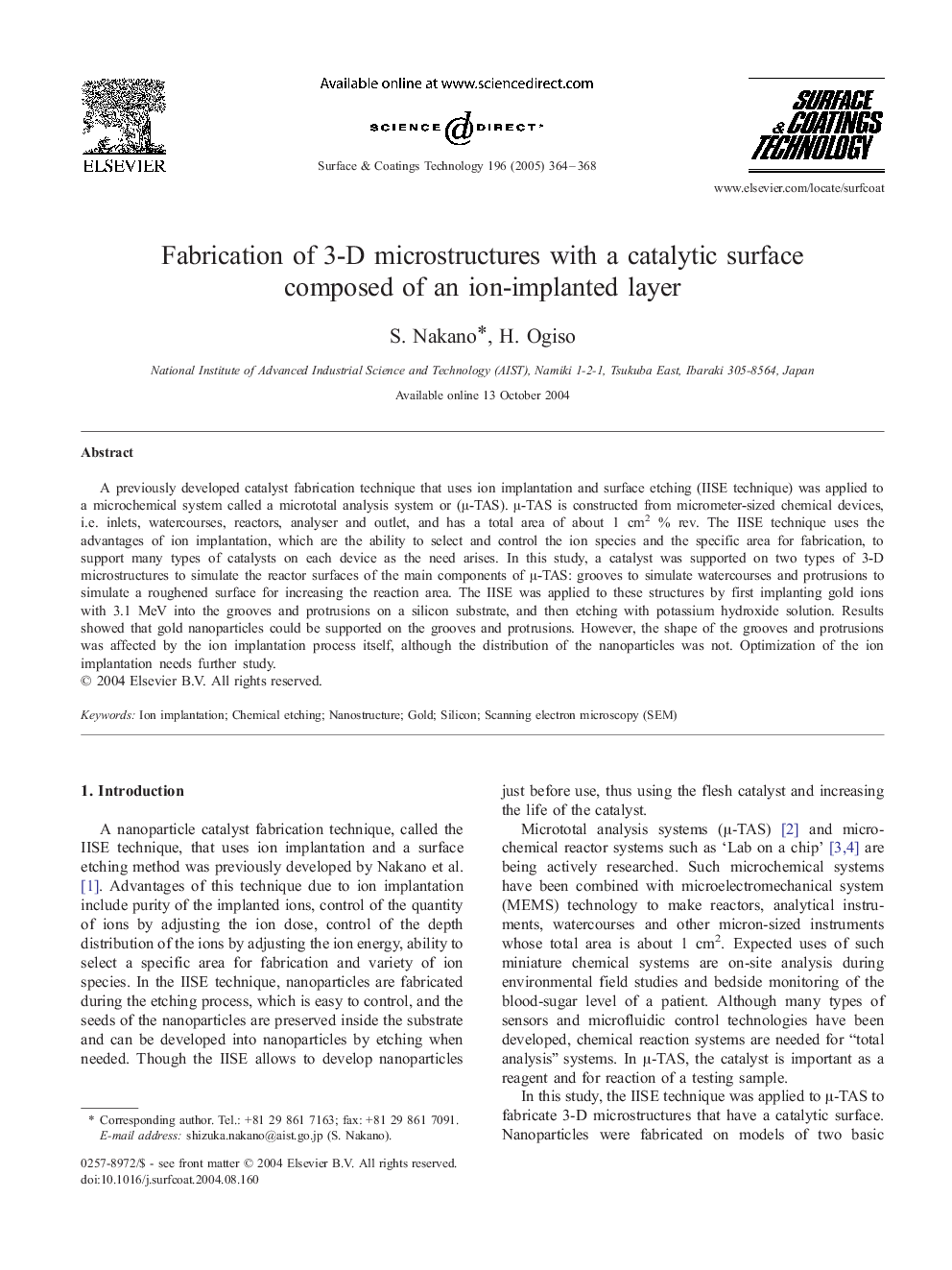| Article ID | Journal | Published Year | Pages | File Type |
|---|---|---|---|---|
| 9809726 | Surface and Coatings Technology | 2005 | 5 Pages |
Abstract
A previously developed catalyst fabrication technique that uses ion implantation and surface etching (IISE technique) was applied to a microchemical system called a micrototal analysis system or (μ-TAS). μ-TAS is constructed from micrometer-sized chemical devices, i.e. inlets, watercourses, reactors, analyser and outlet, and has a total area of about 1 cm2 % rev. The IISE technique uses the advantages of ion implantation, which are the ability to select and control the ion species and the specific area for fabrication, to support many types of catalysts on each device as the need arises. In this study, a catalyst was supported on two types of 3-D microstructures to simulate the reactor surfaces of the main components of μ-TAS: grooves to simulate watercourses and protrusions to simulate a roughened surface for increasing the reaction area. The IISE was applied to these structures by first implanting gold ions with 3.1 MeV into the grooves and protrusions on a silicon substrate, and then etching with potassium hydroxide solution. Results showed that gold nanoparticles could be supported on the grooves and protrusions. However, the shape of the grooves and protrusions was affected by the ion implantation process itself, although the distribution of the nanoparticles was not. Optimization of the ion implantation needs further study.
Related Topics
Physical Sciences and Engineering
Materials Science
Nanotechnology
Authors
S. Nakano, H. Ogiso,
